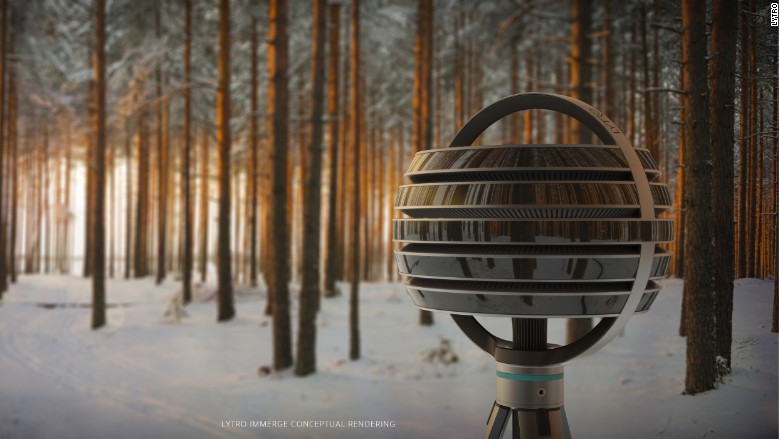
Virtual reality goggles are an emerging technology looking for content. Lytro is a Silicon Valley camera company looking for a hit.
On Thursday, Lytro announced the Immerge, a professional-grade camera system for capturing video for virtual-reality headsets. The company hopes major production studios will use it to create the next generation of content: immersive videos that let you move around and interact with a scene.
Lytro previously released two still cameras that failed to find mainstream success. The company was founded by Stanford researcher Ren Ng as a way to bring light-field technology to commercial products. It has received a lot of hype and raised $150 million, but is still trying to find its niche.
Virtual reality is a field ripe for new players, especially on the camera side, and could be Lytro's big break. Competitors include Google (GOOG) and GoPro (GPRO), which have teamed up to make their own custom virtual reality camera rig.
The centerpiece of Immerge is a unique spherical camera. About the size of a beach ball, the device is actually five rings of high-resolution, professional quality video sensors stacked on top of each other.
They capture detailed information on rays of light and then use the data to essentially recreate a scene in 3D so it can be viewed from different directions. A scene could move in sync with a viewer's movements, like leaning in to peer behind a box or moving up and down.
The Immerge is a big departure for Lytro. This is definitely not a consumer device. The entire system will cost between $100,000 and $500,000. Lytro says its customers will be virtual reality studios, sports leagues, and big-name Hollywood studios, who will likely rent the systems instead of buying them.
To process and store the huge amounts of data it captures, Immerge comes with a dedicated server that attaches directly to the camera.
Lytro hopes to release the camera in the first quarter of 2016. Next year will be virtual reality's big moment, as a number of players, including Sony and Facebook's (FB) Oculus, release their headsets to a wide audience for the first time.
The original Lytro camera, released in 2012, was a colorful stick with a tiny touchscreen on the back. The final photos were interactive, allowing you to change focal points by tapping. The camera started at $399 and didn't take off.
In 2014 Lytro tried again with the Illum, a new higher end camera that cost $1,200. Though Lytro declined to share sales numbers for either product, both have struggled to find customers.
"We always thought of [the Illum] as a stepping stone," said CEO Jason Rosenthal. "I'm super bullish on virtual reality and augmented reality. Done right, it really is the next logical way for people to interact with computers."

